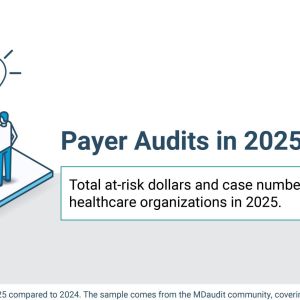In the industry of healthcare, one of the most daunting challenges faced by hospitals is managing and documenting complex inpatient cases. This complexity often leads to a significant loss in revenue, a problem that many healthcare institutions are struggling to address. This statistic from Becker’s Hospital Review speaks for itself: a consistent 3% to 5% margin of revenue opportunity is lost due to the complexity of documenting and coding for complex inpatient cases. For a mid-size hospital, this can translate to a staggering $22 million to $38 million in lost revenue annually.
Understanding the Complexity
Complex inpatient cases involve a myriad of factors, including multiple diagnoses, extensive treatment plans, and a higher volume of documentation. These elements can overwhelm healthcare professionals, leading to errors or omissions in coding and documentation. The ripple effect of these inaccuracies is substantial:
- Missed Billing Opportunities: Proper documentation is crucial for billing. Incomplete or incorrect documentation can result in services not being billed or billed incorrectly, leading to revenue loss.
- Compliance Risks: Inaccurate coding can also expose hospitals to compliance risks. Regulatory bodies require precise documentation, and failure to meet these standards can result in penalties and fines.
- Operational Inefficiencies: The time and resources spent on correcting documentation errors can drain operational efficiency, further impacting a hospital system’s financial health.
Strategies for Improvement
Consider a mid-size hospital with an annual revenue of $500 million. A 5% loss in revenue due to documentation and coding complexities equates to $25 million. This is not just a theoretical figure; it represents real financial resources that could be redirected toward improving patient care, expanding services, or investing in new technologies. Given the significant financial implications, hospitals must adopt robust strategies to mitigate these losses. Here are some key approaches:
- Invest in Training and Education: Continuous training for healthcare professionals on the latest coding standards and documentation practices is essential. This ensures that the staff is well-equipped to handle complex cases accurately.
- Implement Advanced Technology: Leveraging technology such as a risk monitoring platform can streamline the documentation and coding process. Automated systems can help identify and rectify errors in real time, ensuring accuracy and compliance.
- Foster Collaboration: Encouraging collaboration with coding professionals can bridge knowledge gaps and enhance documentation quality. Regular interdisciplinary meetings can facilitate better communication and understanding.
- Schedule Regular Audits: Regularly scheduled internal audits can help identify common documentation errors and areas for improvement. These audits provide valuable insights that can be used to refine processes and training programs.
The Role of Continuous Risk Monitoring
MDaudit’s continuous risk monitoring technology plays a crucial role in navigating the complexities of inpatient cases. By providing real-time insights and automated alerts, our platform helps healthcare providers maintain high standards of documentation and coding. This not only minimizes revenue loss but also enhances compliance and operational efficiency.
Our Hospital Workflow is designed to easily audit high-risk DRGs, HCCs, CC/MCCs, and all other focuses of CMS and OIG, and leverage facility risk metrics to identify auditing targets. Audit inpatient and outpatient services rendered, for example, ASC surgical services or an inpatient DRG encounter; conduct audits prospectively and retrospectively and use sophisticated dashboards and data visualizations that pinpoint risk and future auditing focus areas.
With MDaudit, hospitals can unlock their full revenue potential, ensuring that every dollar earned is accurately captured and accounted for. We are committed to supporting healthcare providers in this endeavor, providing the technology and expertise needed to achieve meaningful outcomes.







